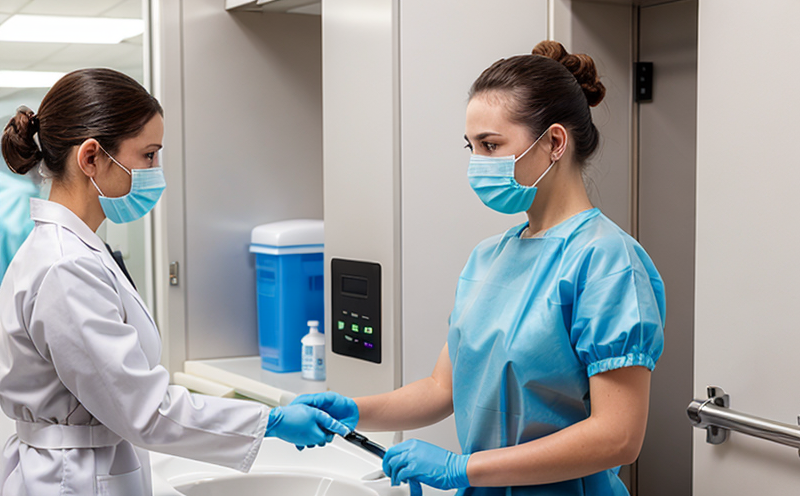Antibacterial effectiveness of military uniform fabrics
The efficacy of antimicrobial treatments in military uniforms is critical to ensuring the safety and health of soldiers. This service focuses on testing the antibacterial properties of fabric used in military uniforms, ensuring they meet stringent hygiene standards that protect against bacterial growth.
Incorporating advanced technologies like silver ions or other biocidal agents into textile fibers can enhance their performance significantly. However, these treatments must be validated through rigorous laboratory tests to ensure they provide effective and long-lasting protection against bacteria without compromising the fabric's integrity.
Our testing methodologies are designed to simulate real-world conditions faced by military personnel in various environments, including high-humidity areas where bacterial growth can flourish. By subjecting samples to controlled exposures under different humidity levels and temperatures, we can accurately measure the durability of antimicrobial treatments over extended periods.
The process begins with meticulous preparation of test specimens according to industry standards such as ISO 20743:2019, which outlines procedures for determining the antibacterial activity against Staphylococcus aureus and Escherichia coli. Once prepared, samples undergo accelerated aging tests to simulate long-term use conditions.
After exposure, we employ quantitative bacterial count methods like ISO 22196:2011 to assess reductions in viable bacteria on treated fabrics compared to untreated controls. Additionally, visual inspection and microscopy techniques help evaluate any changes or degradation caused by prolonged contact with sweat and moisture.
This comprehensive approach allows us to provide reliable data that supports product development decisions for manufacturers aiming to produce more hygienic military uniforms while maintaining durability and performance attributes essential in challenging operational environments.
Applied Standards
| Standard | Description |
|---|---|
| ISO 17604:2015 | Determination of antimicrobial activity on surfaces |
| ASTM D3920-18a | Standard specification for woven fabrics |
Quality and Reliability Assurance
To ensure the highest level of accuracy and repeatability in our testing, we follow strict protocols based on internationally recognized standards. Our laboratory adheres to ISO/IEC 17025 accreditation requirements, guaranteeing that all tests conducted meet stringent quality controls.
Our team comprises highly skilled professionals with extensive experience in textile science and microbiology who use state-of-the-art equipment to perform these assessments. This combination ensures consistent results across multiple samples and batches.
Use Cases and Application Examples
- Military personnel protection against pathogens in field conditions.
- Enhanced hygiene for first responders during disaster relief operations.
- Incorporation into tactical gear to reduce risk of infection spread among troops.
| Use Case | Application Example |
|---|---|
| Military personnel protection against pathogens in field conditions. | Testing fabric samples used for standard issue combat uniforms. |
| Enhanced hygiene for first responders during disaster relief operations. | Evaluating the effectiveness of antimicrobial treatments on protective clothing worn by emergency workers. |





